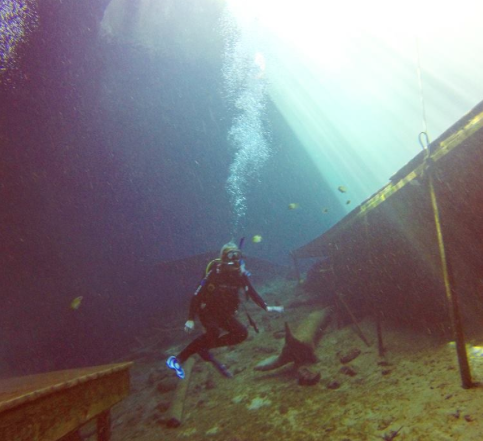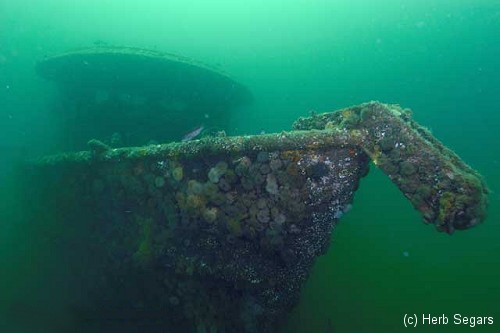Dive In: Exploring the Wrecks of the Jersey Shore
Before Cape May became the summer hot spot that we all know and love today, Cape May, NJ was settled as a whaling and fishing town during colonial times. Due to this, the waters surrounding Cape May became highly populated with ships and fishing vessels as it remains to this day. This included an abundance of Naval vessels during World War II as Cape May served as the U.S. Navy base before it became a Coast Guard Training Station. Due to several rough storms that have hit the Jersey Shore in the past, many of these vessels have became subjected to stormy water and fell short of returning back to shore. Many of these shipwrecks line the Jersey Shore and have attracted divers from all over the world to dive into these historic sites. One site in particular that can be seen from the shore of Cape May and on the Whale Watching Vessels is that of the U.S.S Atlantus, which sunk in 1926. Although this specific site does not attract many divers, it still provides a great example of the wrecks that surround the South Jersey Shore. It has been estimated that there are between 4000 to 7000 wrecks off the coast of New Jersey, which only broadens your options for a great dive.
Off the shore of Wildwood lies the Wildwood Artificial Reef, which is now home to the wrecks of several Army tanks and five sunken ships. These wrecks have attracted an abundance of biodiversity to the area, making it a great site to dive. Unfortunately, more often than not, the visibility of these waters can be low due to the turbidity and the immense amount of phytoplankton that enrich these waters. However, due to the presence of the former, New Jersey waters are known to have a plentiful array of biodiversity. Phytoplankton is a great indicator of nutrient rich water, which is an attractive habitat to many marine species. The Jersey shore is known to have populations of several northern marine species as well as southern marine species that are swept north by the Gulf Stream. Sightings can range from larger organisms such as sharks and skates, to bottom dwellers such as lobsters and starfish. Although the water might not be as clear as it is in the Caribbean, the variety of marine life is more than enough of a reason to dive in South Jersey. So grab your SCUBA gear and dive into an incredible and historic experience!

Kim diving Blue Grotto Springs, Florida, May 2015
-Kimberly Corcoran, Gettysburg College, Intern at Cape May Whale Watch and Research Center
Sources:
“History Of Cape May, New Jersey| Capemay.Com”. 2016. Capemay.Com. http://www.capemay.com/capemayhistory.html.
“New Jersey Scuba Diving”. 2016. Njscuba.Net. http://njscuba.net/index.php.
“Ocean Color – NASA Science”. 2016. Science.Nasa.Gov. http://science.nasa.gov/earth-science/oceanography/living-ocean/ocean-color/.


